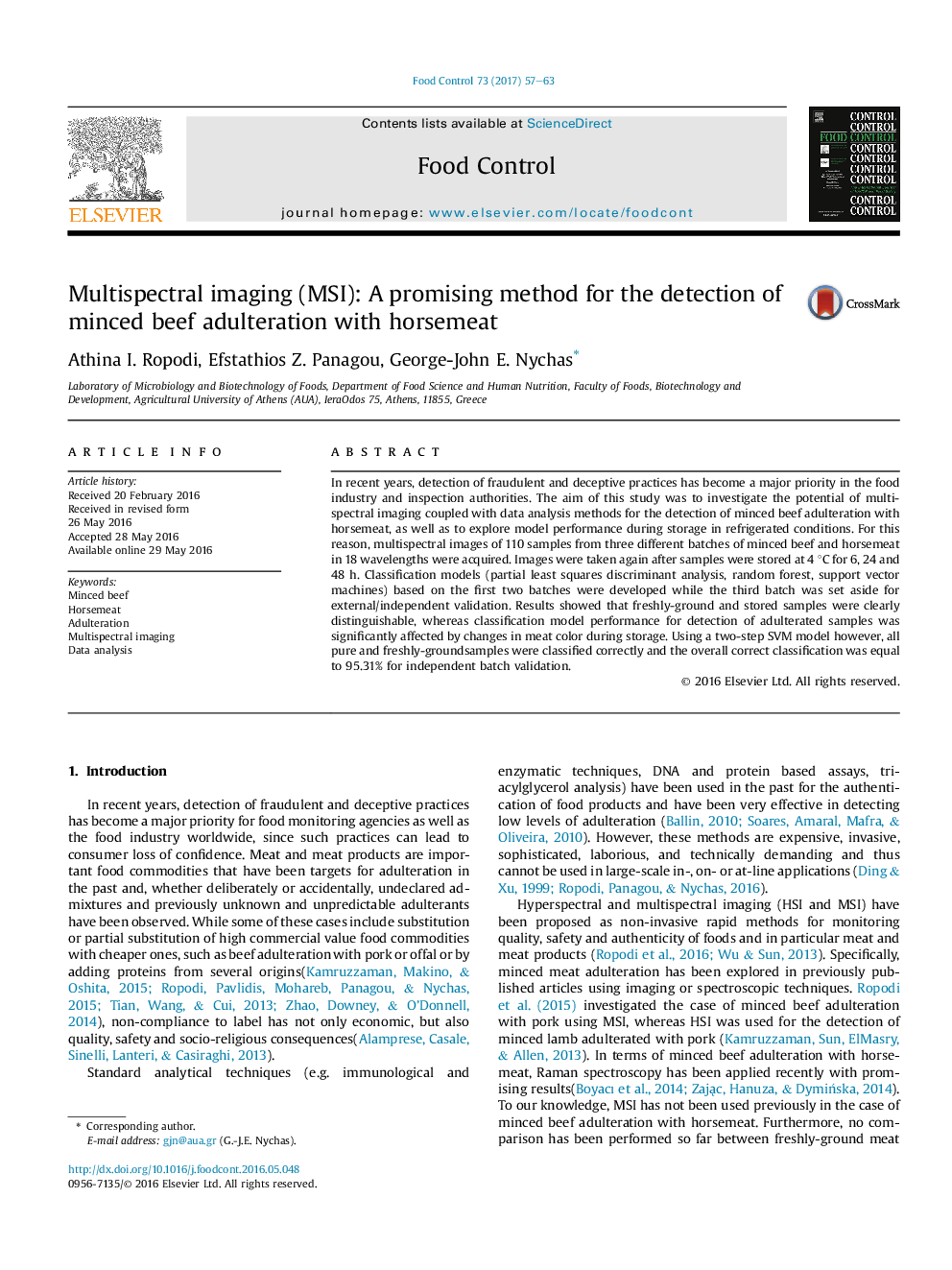| کد مقاله | کد نشریه | سال انتشار | مقاله انگلیسی | نسخه تمام متن |
|---|---|---|---|---|
| 4558930 | 1413196 | 2017 | 7 صفحه PDF | دانلود رایگان |
• Multispectral imaging was used in the detection of beef adulteration with horsemeat.
• Various chemometric and machine learning techniques are applied.
• Samples were stored at 4 °C, significantly affecting model performance.
• A two-step SVM was applied for the detection of pure and freshly-ground samples.
• The model yielded 95.31% overall correct classification for independent validation.
In recent years, detection of fraudulent and deceptive practices has become a major priority in the food industry and inspection authorities. The aim of this study was to investigate the potential of multispectral imaging coupled with data analysis methods for the detection of minced beef adulteration with horsemeat, as well as to explore model performance during storage in refrigerated conditions. For this reason, multispectral images of 110 samples from three different batches of minced beef and horsemeat in 18 wavelengths were acquired. Images were taken again after samples were stored at 4 °C for 6, 24 and 48 h. Classification models (partial least squares discriminant analysis, random forest, support vector machines) based on the first two batches were developed while the third batch was set aside for external/independent validation. Results showed that freshly-ground and stored samples were clearly distinguishable, whereas classification model performance for detection of adulterated samples was significantly affected by changes in meat color during storage. Using a two-step SVM model however, all pure and freshly-groundsamples were classified correctly and the overall correct classification was equal to 95.31% for independent batch validation.
Journal: Food Control - Volume 73, Part A, March 2017, Pages 57–63
